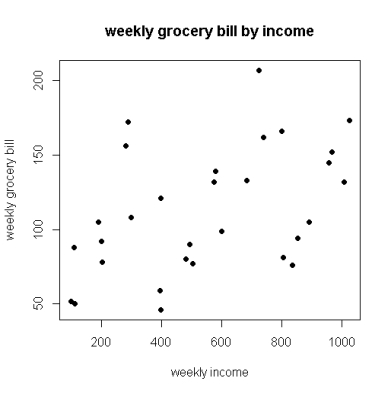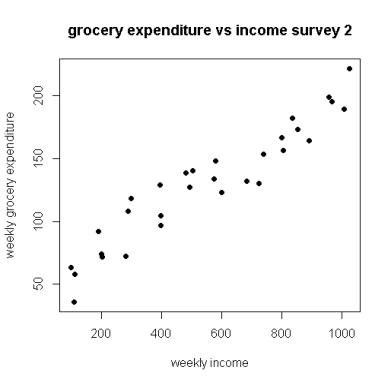Multiple Choice
An economist conducted a study of the possible association between weekly income and weekly grocery expenditures. The particular interest was whether higher income would cause shoppers to spend more on groceries. A random sample of shoppers at a local supermarket was obtained. A questionnaire was administered asking about the weekly income of each shopper's family and their grocery bill for that week. A second survey was conducted at a different supermarket, and the scatterplot was obtained for the relationship between grocery expenditures and incomes in that survey as well. The two scatterplots are given below: 
 Which of the following statements is true?
Which of the following statements is true?
A) The correlations for both surveys are similar in magnitude.
B) The correlation is closer to 1 in survey 1 than in survey 2.
C) The correlation is closer to 0 in survey 1 than in survey 2.
D) The correlations need to be calculated to determine which is closer to 1; a scatterplot cannot provide this information.
Correct Answer:

Verified
Correct Answer:
Verified
Q16: Colleges often rely heavily on raising money
Q17: An introductory statistics class decides to investigate
Q18: An economist conducted a study of the
Q19: The volume of oxygen consumed (in liters
Q20: A researcher states that bone density in
Q22: An economist conducted a study of the
Q23: Below is a scatterplot of the number
Q24: Does exposure to classical music (through instrument
Q25: The volume of oxygen consumed (in liters
Q26: An economist conducted a study of the